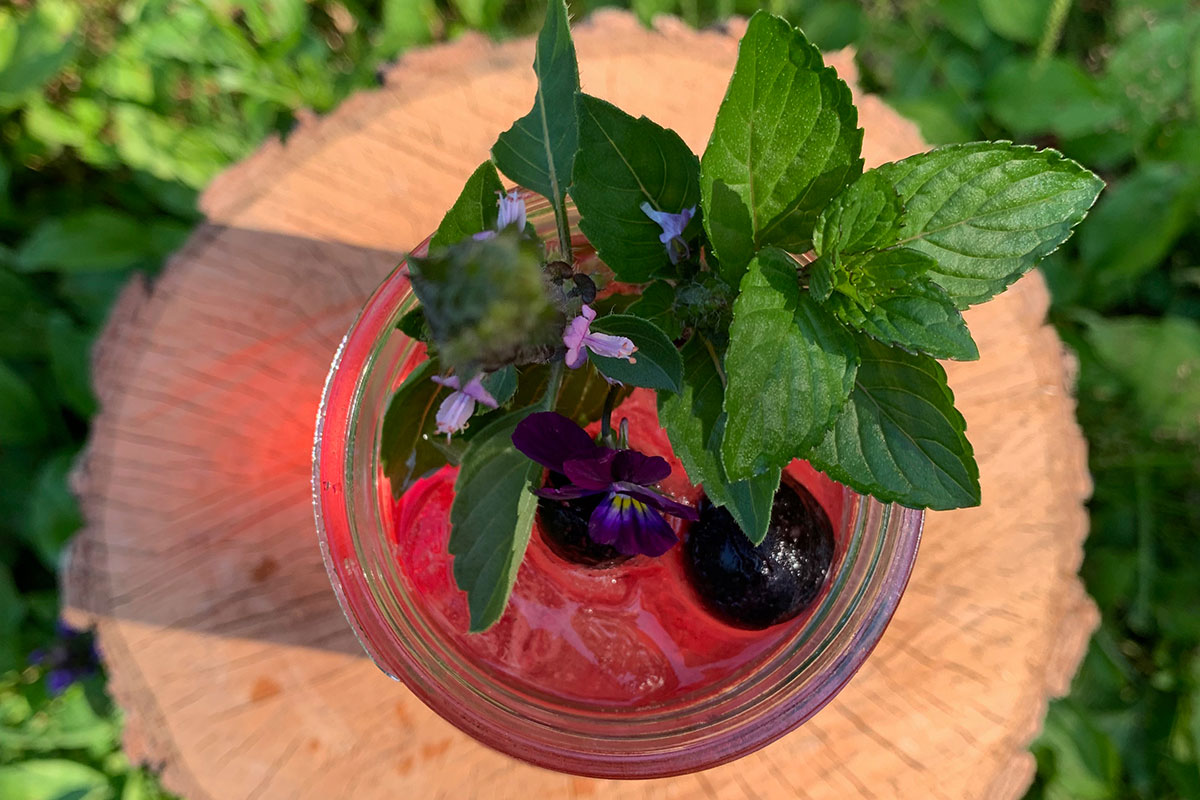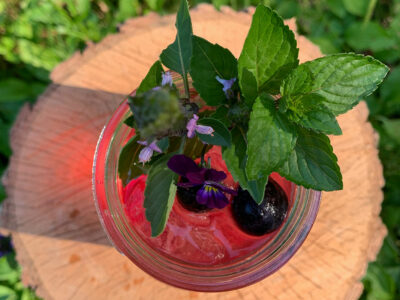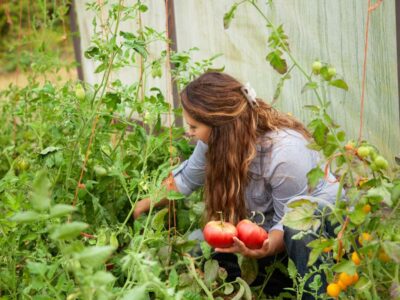If you’re looking for an alternative to soda, coffee or other beverages, let me encourage you to try an herbal drink, elixir, shrub or cocktail/mocktail!
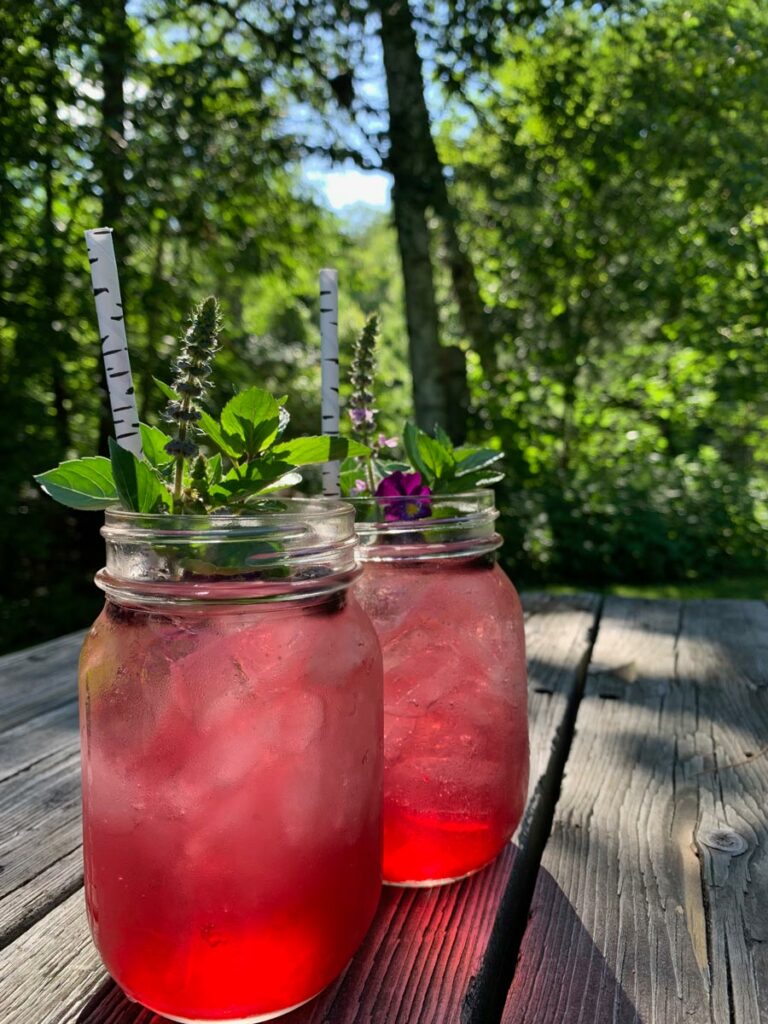
My guest, Laura Gilmour, is full of fun and inventive ways to get healthy herbs into our bodies with delicious drink concoctions. This is one more way we can use herbs throughout the year.
I think you’ll enjoy this podcast episode (#436) as we discuss the differences between herbal drinks, elixirs, shrubs and more. Laura also shares many tips on making your own creative herbal drinks with a basic formula.
If you missed my podcast interview with CeAnne from Farmhouse Teas, you’ll want to check out that post as we talk about making healthy alternatives to soda.

Table of Contents[Hide][Show]
About Laura
Laura Gilmour is a forager, herbalist, and business owner living near Dwight, Ontario. Her rural upbringing allowed her to develop a natural curiosity and passion for nature from a young age.
Laura formally studied ecology and later went on to pursue sustainable living by apprenticing on several Permaculture farms and studying with a number of herbalists. Laura has a passion for naturalist studies, homesteading, and traditional living skills that connect us to our food and the land in the most human of ways.
Laura runs Wild Muskoka Botanicals, which produces artisan wild foods and cocktail products. It exists to reconnect people with the natural world and to promote wellness and fun by incorporating wild plants back into people’s modern lives. She also teaches good foraging practices and herbal medicine classes in the Muskoka area from a relationship-based perspective.

What’s the Difference Between Herbal Drinks, Elixirs, Cocktails & Mocktails?
Herbal drinks, elixirs, cocktails and mocktails are often times used interchangeably, but they shouldn’t be. There are differences between them.
- Cocktails – Cocktails are typically an alcohol-based drink that is generally presented very beautifully with different flavorings and garnishes.
- Mocktails – For those who don’t want to consume alcohol, a Mocktail is typically the same special drink made without the alcohol.
- Herbal Drinks – Whether it’s an herbal tea that’s been mixed with other items or herbs added through tinctures, herbal drinks include herbs for their actions. Laura also recommends making herbal simple syrups to use in your drinks. Essentially brewing a strong herbal tea and using equal parts tea and sugar to create a simple syrup.
- Elixirs – If you look up the definition of an elixir you’ll see it’s “a magical or medicinal potion.” This is not what we’re referring to. Rather, we’re talking about drinks that have medicinal properties from the herbs that are sipped on and enjoyed for their flavor and health benefits.
What Are Bitters?
Laura discussed the use of bitters in her drinks and how they can be balanced out by adding vibrant floral notes such as lemon balm, cinnamon or ginger, along with a sweet note from sweetener, simple syrup or fruit.
The way bitters work is that the bitter flavor stimulates your taste buds to create saliva. This jumpstarts your digestive system (saliva helps break down starches and fats). Common bitters include artichoke leaf, bitter melon, burdock root, dandelion, gentian root, licorice root and wormwood. (Source)
Think of bitters like adding salt and pepper to a dish. This is the “seasoning” to your drink and is generally the “finishing touches.”
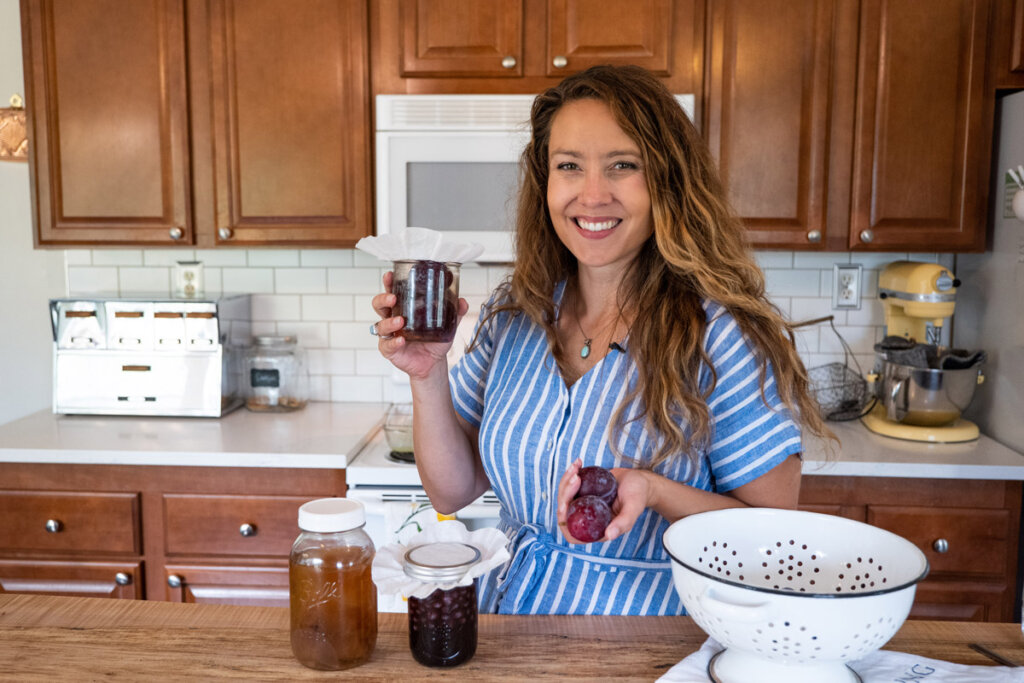
What is a Shrub?
Many people get confused with the term “shrub” as a drink. It’s derived from the Arabic word sharab, meaning “to drink.”
Historically, a shrub is an old colonial form of food preservation. When people would have excess amounts of fruit, they would take the “b-grade” fruit and turn it into a shrub.
How to Make a Shrub
You can make a shrub very easily by following these steps:
- Take equal parts (by volume) of fruit and sugar and combine in a bowl (it’s best if the fruit is cut into small-ish pieces first).
- Since sugar is hydrophilic (meaning it draws water out), it will draw out the liquid from the fruit, creating a syrup.
- Drain the fruit mass out and combine equal parts fruit syrup and apple cider vinegar.
Laura also recommends infusing your apple cider vinegar with herbs for an extra layer of flavors. You can learn how to make homemade apple cider vinegar here.
Pro Tip: If using homemade apple cider vinegar to make homemade shrubs, treat your drink like a ferment and be sure to burp your bottles to release the carbonation. If you don’t want that active ferment, you can pasteurize your apple cider vinegar by heating it to 140°F (not exceeding 160°F) and pouring it into very clean bottles along with your fruit syrup.
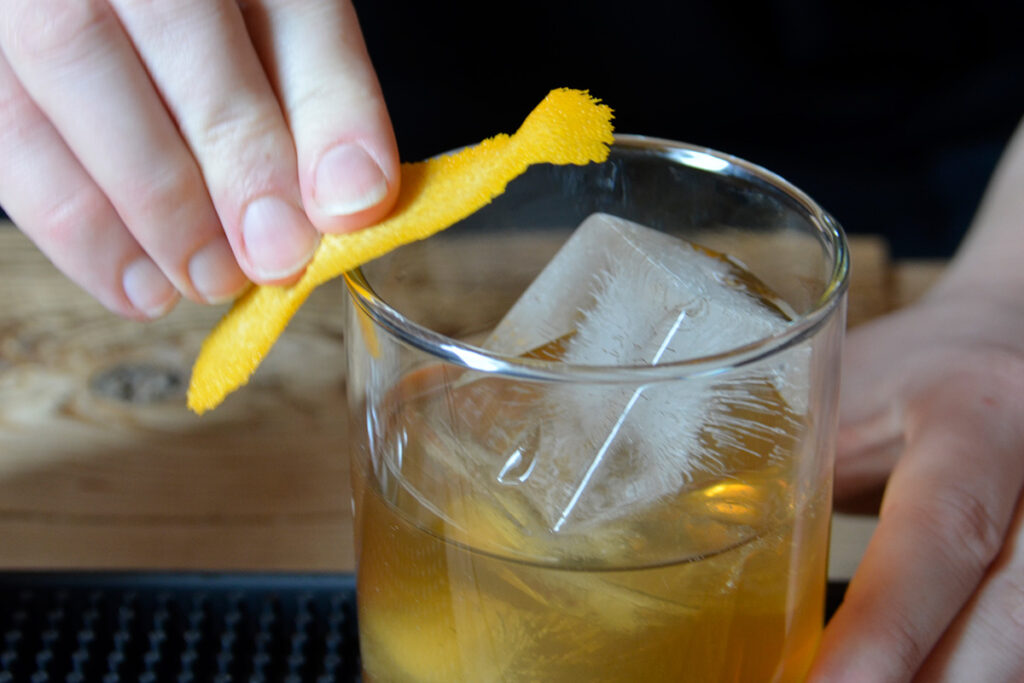
Benefits of Herbal Drinks & Elixirs
There are many benefits of herbal drinks and elixirs, but ultimately, it’s going to boil down to the herbs used. Because we’re consuming them for their herbal actions, we have full control over both the flavor and the benefits.
Laura mentioned that most herbal drinks and elixirs are being made with herbs that have a health-supporting effect. Tonic herbs or adaptogenic herbs promote health when consumed regularly over time, whereas medicinal herbs are used for acute health concerns, such as infection.
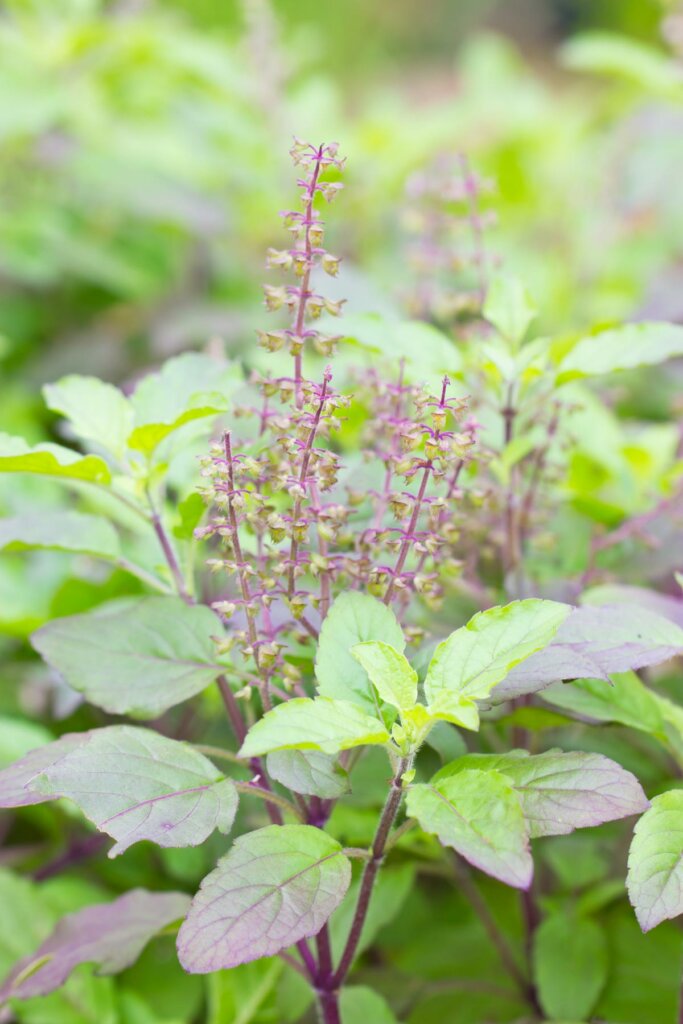
How to Make Herbal Elixirs
Common Herbs for Tea
Laura mentioned that although she grows a vegetable garden, she likes to grow a few herbs for tea right on her patio. When herbs are easily accessible, people are much more likely to implement them into their daily routines.
Laura grows mint, lemon balm, holy basil (tulsi), regular basil, thyme, elderflower, and beebalm for tea.
Many times she starts with a base of herbal tea for her drink, but sometimes she uses that tea to then make an herb simple syrup.
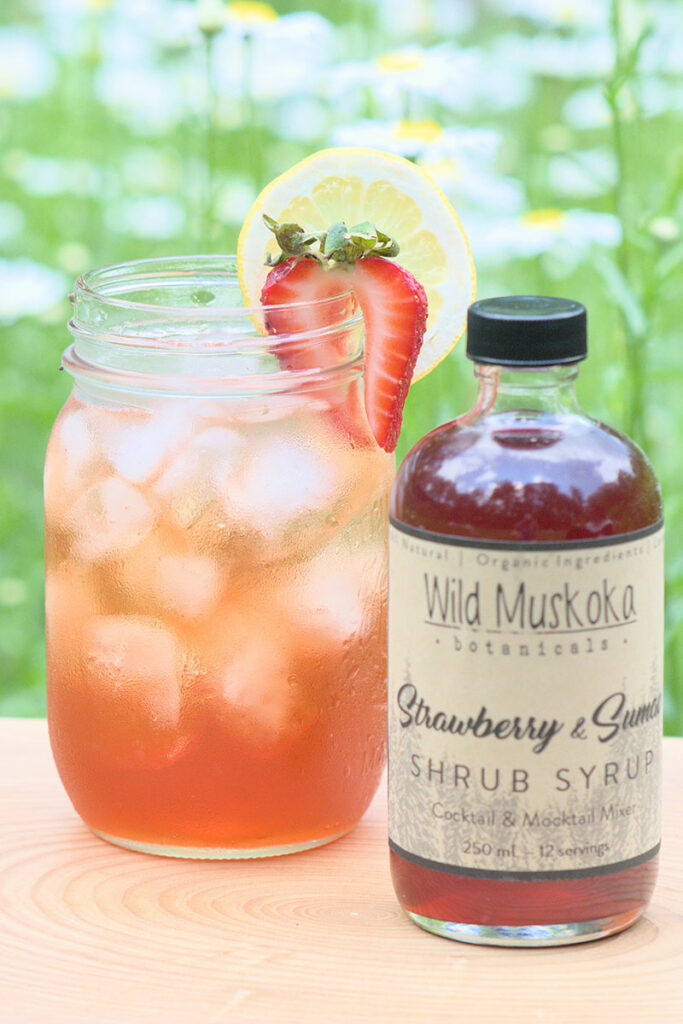
Basic Simple Syrup
To make a simple syrup you combine equal parts water and sugar to a saucepan and bring it to a boil. Stir until the sugar dissolves and let cool. Store this in the refrigerator and use in all your herbal elixirs, cocktails and mocktails.
To take it one step further, you can make herbal simple syrup by either starting with a strong brewed tea as the “water” in the simple syrup, or by adding fresh herbs after the sugar has dissolved and the heat is off.
For example, to make a mint simple syrup:
- Take one cup of sugar and one cup of water and bring it to a boil.
- Turn off the heat and add one cup of mint leaves.
- Stir and allow the mint leaves to steep in the simple syrup for 15 minutes.
- Strain out the mint leaves and store the mint simple syrup in the refrigerator.
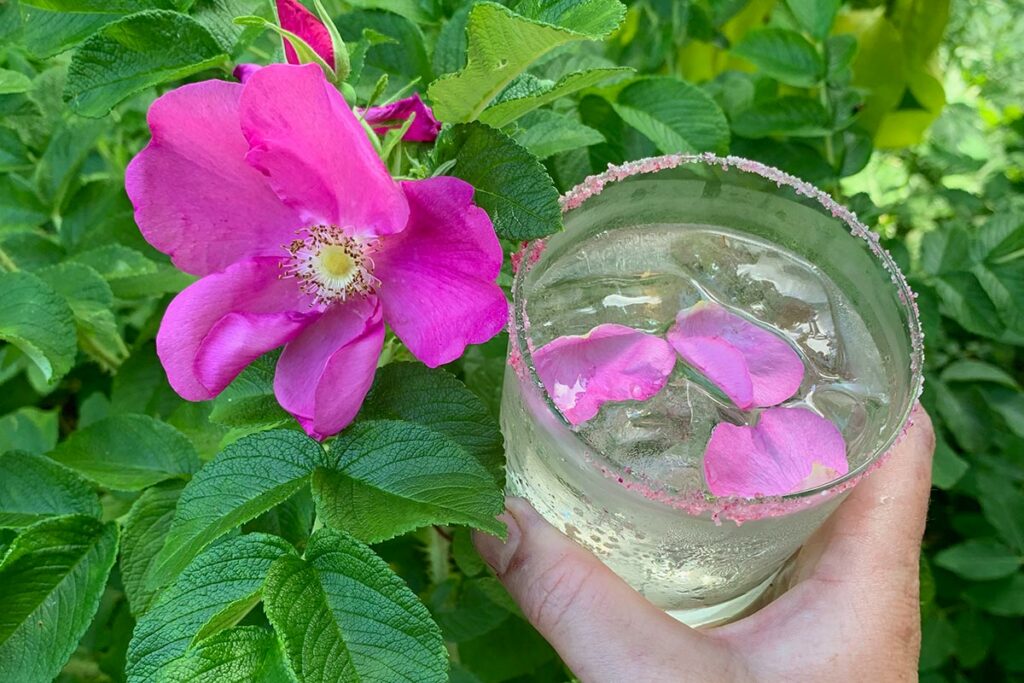
Garnishing Your Drinks
Let’s face it, we eat (and drink) with our eyes first. When you’re handed a beautifully crafted beverage that’s garnished, it just hits differently, am I right? Laura shares all kinds of tips and tricks for garnishing our drinks, including the finishing touches of bitters (it’s like the seasoning of the drink) as well as the following tips:
- Shake Your Drink – There’s a reason bartenders shake your drinks before pouring them into the glass. This helps aerate the ingredients, releasing more of their flavors (especially when using herbs and citrus fruits).
- Garnish – Adding garnishes, especially aromatic garnishes, brings another level to the drink as we smell the garnish before we take the drink. If you have citrus in your drink, add a lemon or lime wedge. If you’ve used herbs like mint, rosemary or basil, add a small sprig of the fresh herb to the top of the glass.
- Sugar or Salt the Rim – Finally, adding a rim of sugar or salt can elevate the drink even further. Laura recommends making herbal salts or flavored sugars, rubbing a lemon wedge around the rim of the glass, then dipping the rim into the flavored salt or sugar.
Basic Components of an Herbal Elixir
To make a basic drink, there are a few components you’ll want to include, but always keep in mind there are no hard, fast rules, it’s all about what you like best and having fun with your experiments:
- Sweet: Something sweet such as muddled fruit, fruit juice or simple syrup.
- Acid: To get the acidity, you can use a shrub or freshly squeezed citrus juice such as lemons or limes.
- Bitter: You only need a couple of drops or dashes of bitters. This is the “seasoning” to the drink, so don’t overdo it! Laura has also experimented with using smoky cedar tinctures.
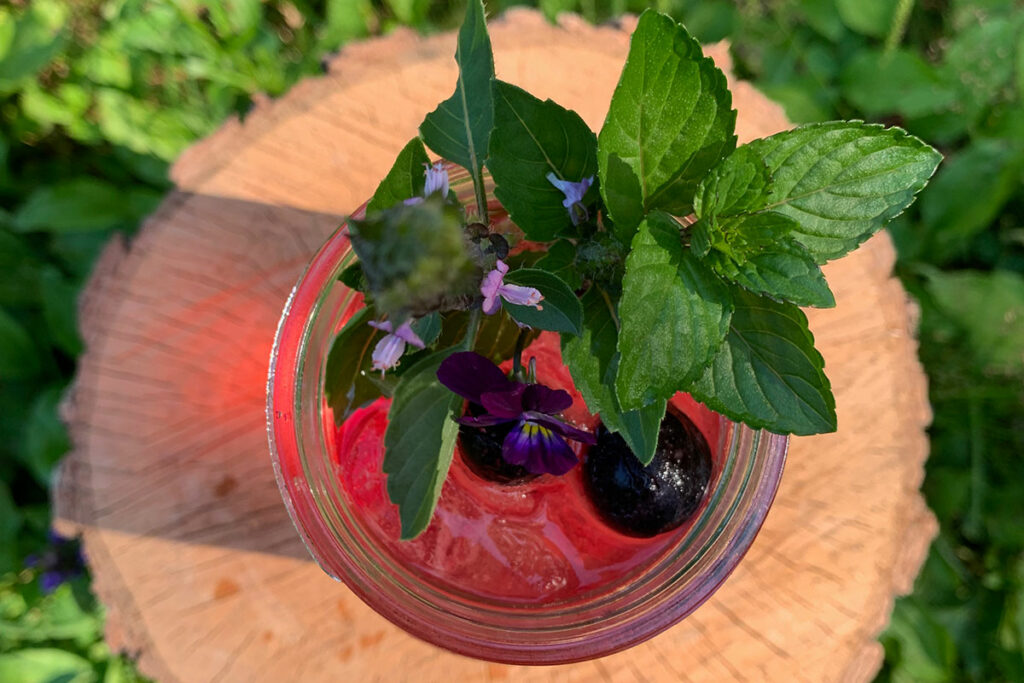
Laura’s Favorite Drink Recipe
Laura loves to make a drink from her blueberry and spruce-infused shrub. Here’s how she makes it:
- Muddle mint (or Tulsi) in the bottom of a Mason jar.
- Throw in a bunch of ice.
- Add 2 Tablespoons of blueberry-spruce shrub.
- Add a squeeze of lime.
- Shake it up and pour it into a fresh Mason jar.
- Top the drink off with bubbly water.
- Garnish with a few dashes of the smoky cedar bitters and a sprig of tulsi.
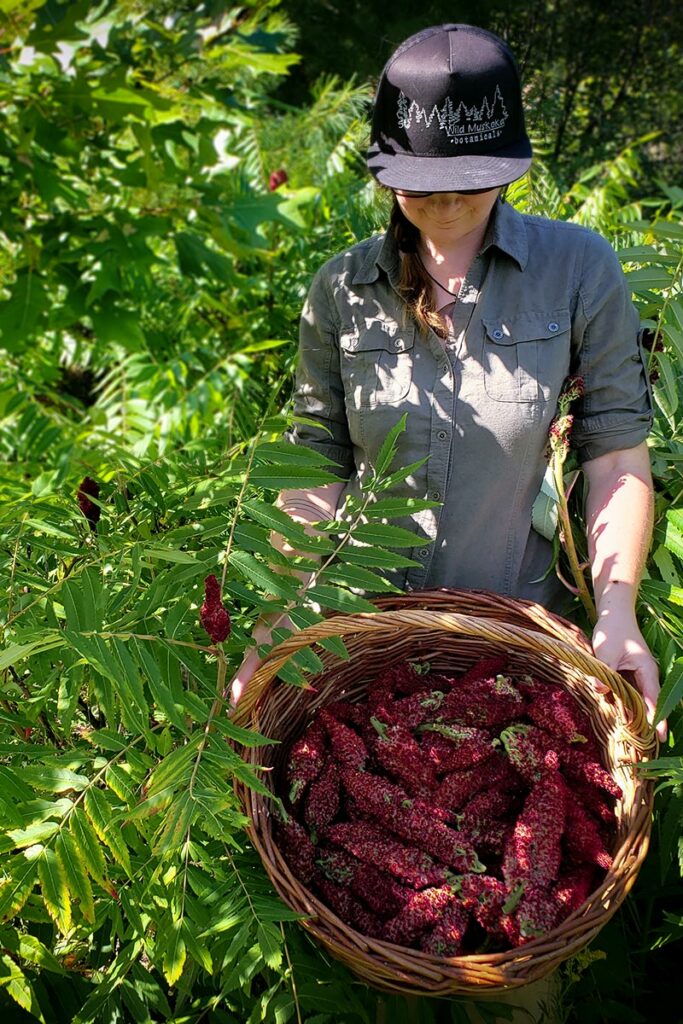
Where to Find Laura
If you’d like to connect with Laura, you can find her at her website, Wild Muskoka, or follow her on Facebook, Instagram and YouTube. If you’re in the Ontario area, she also leads foraging walks.
